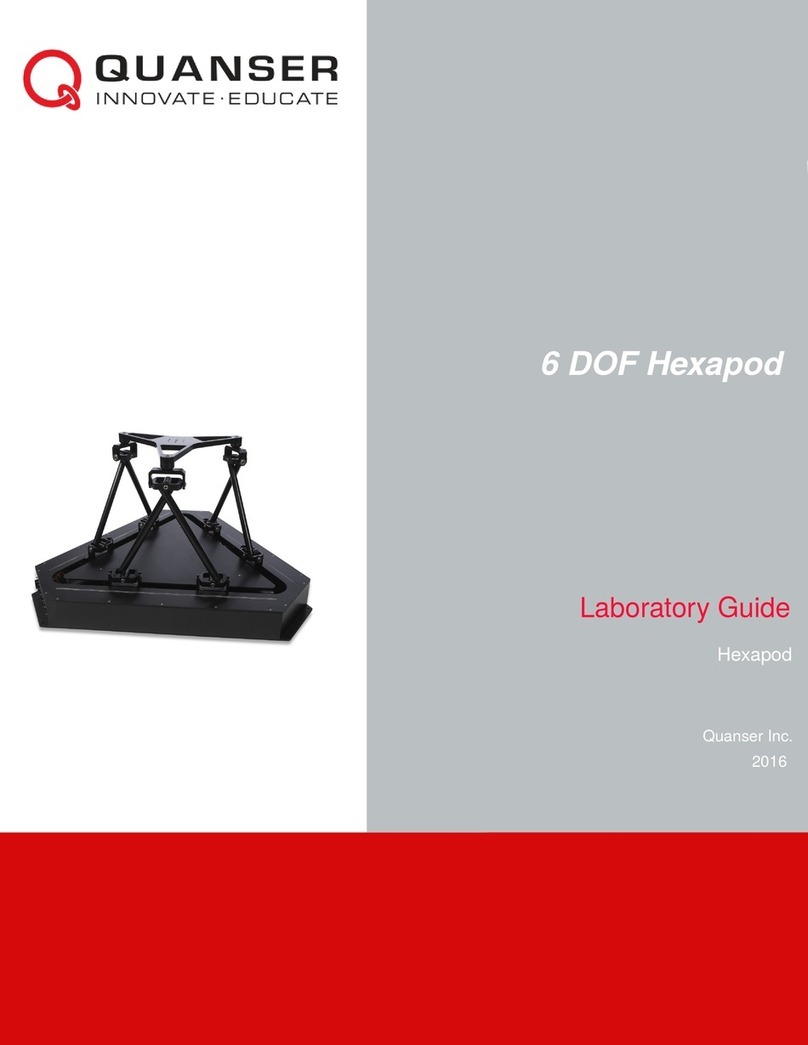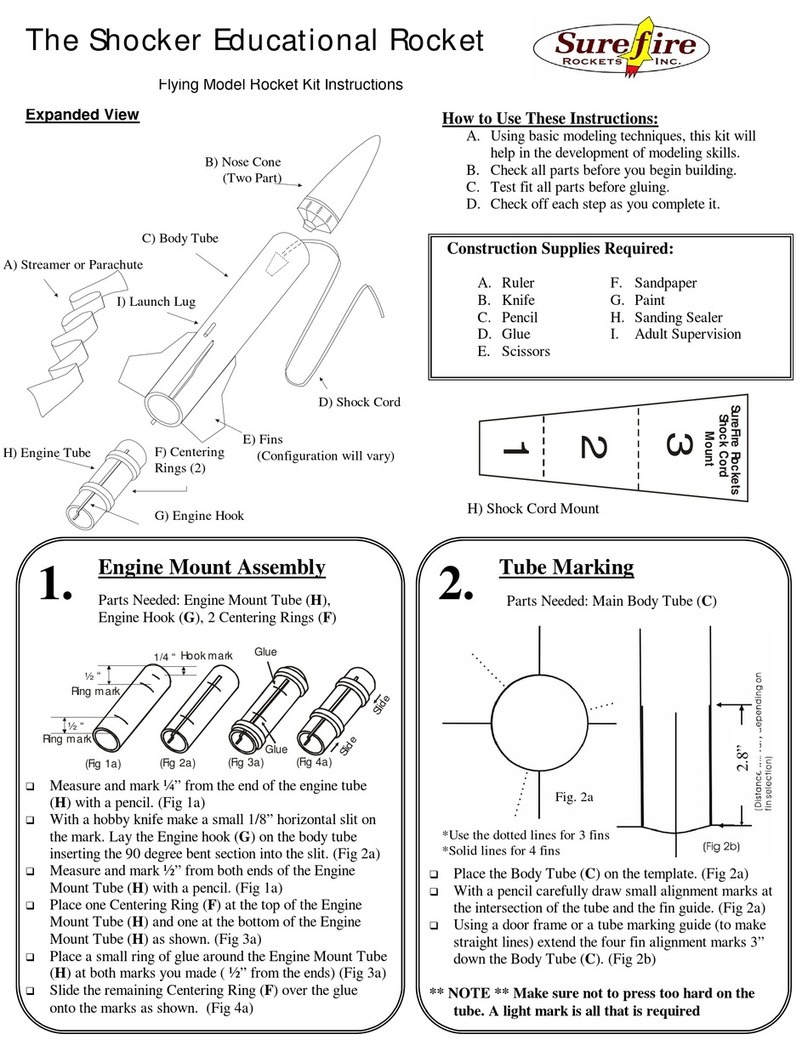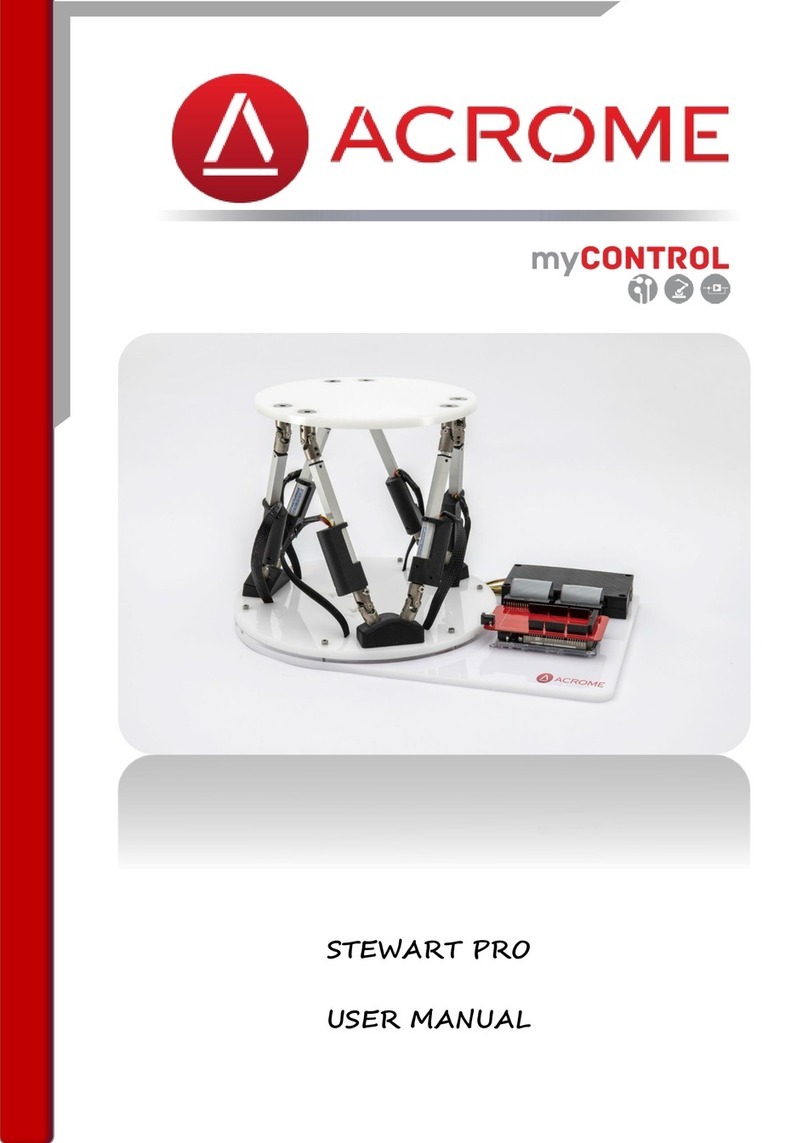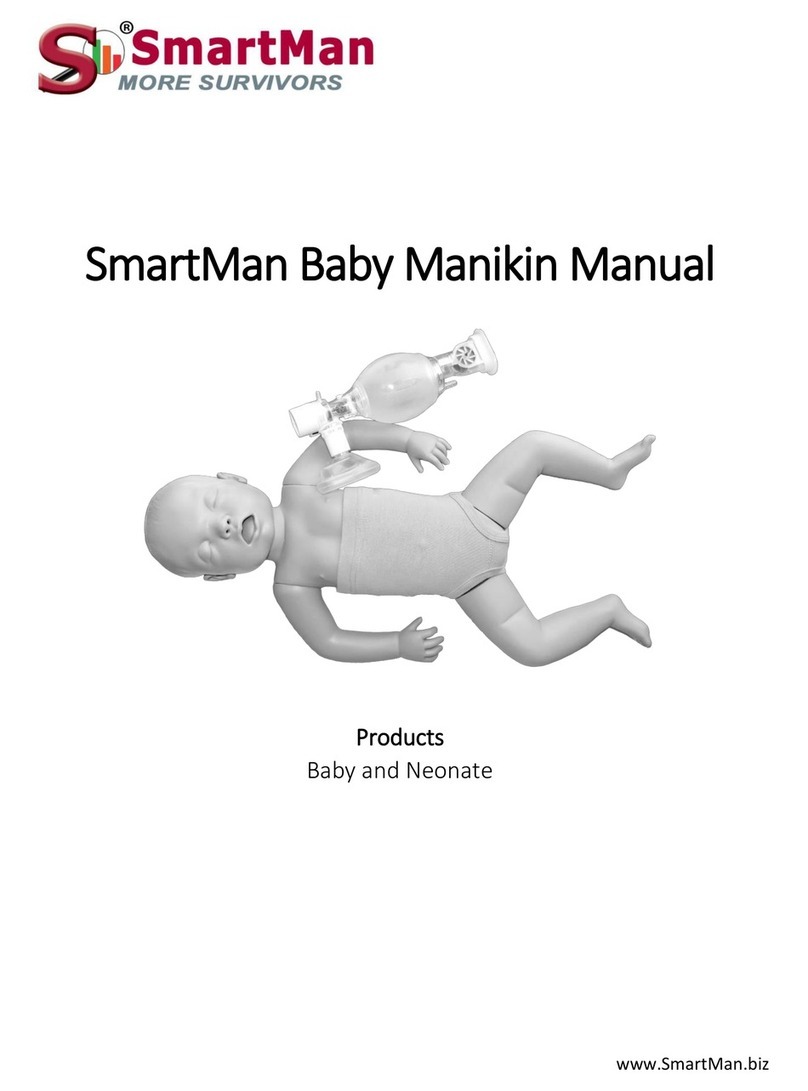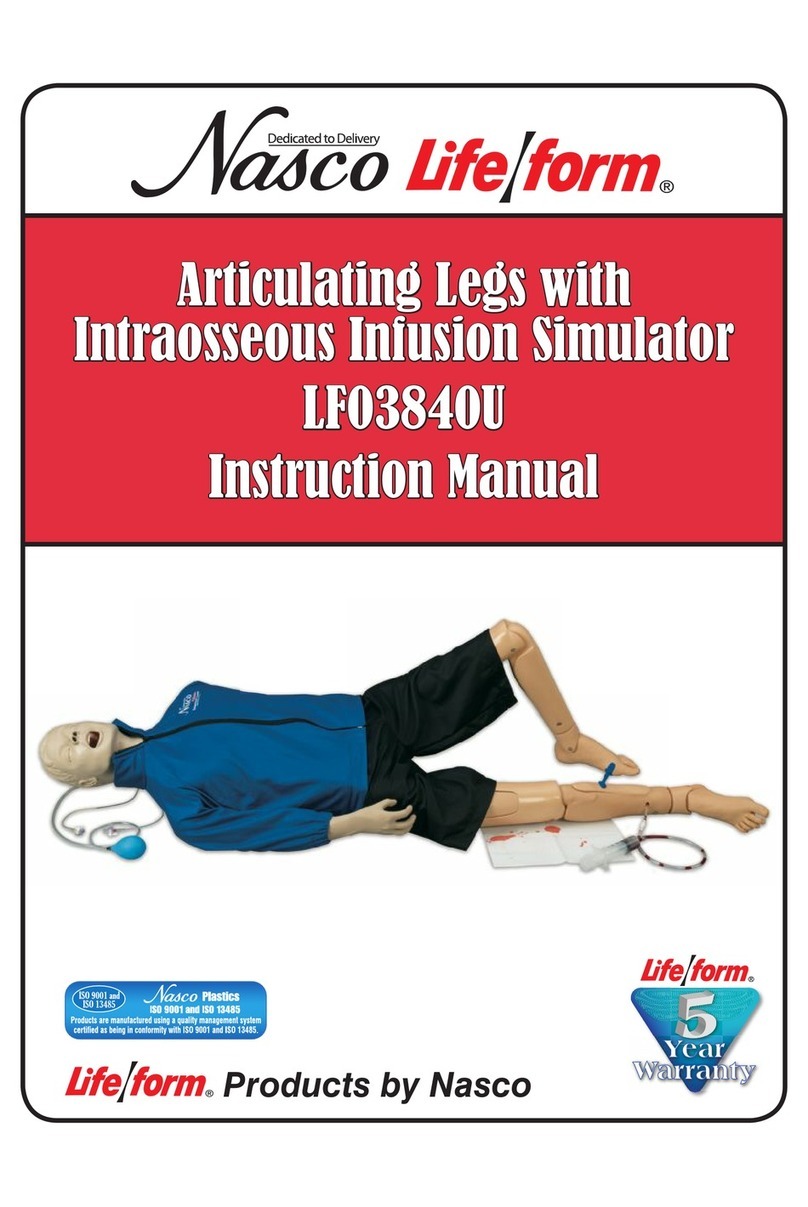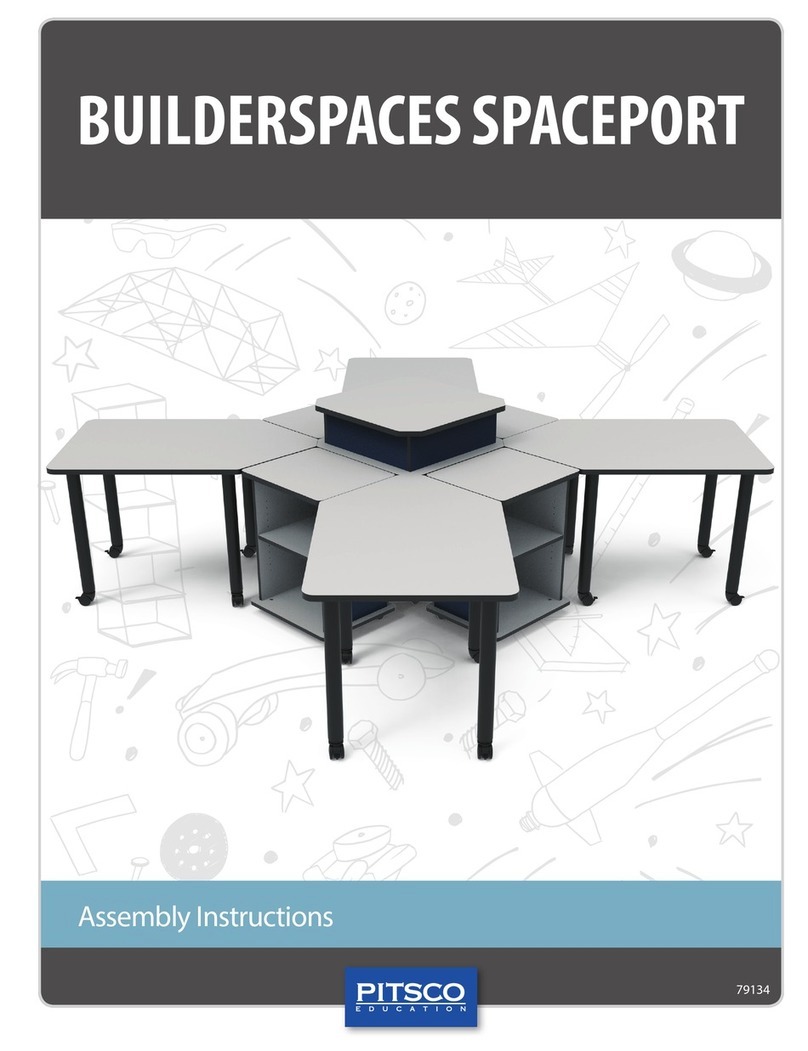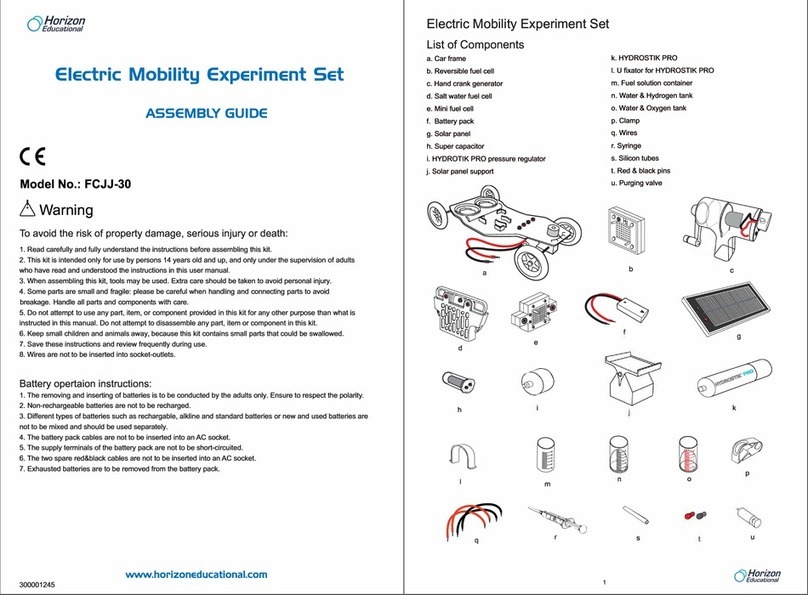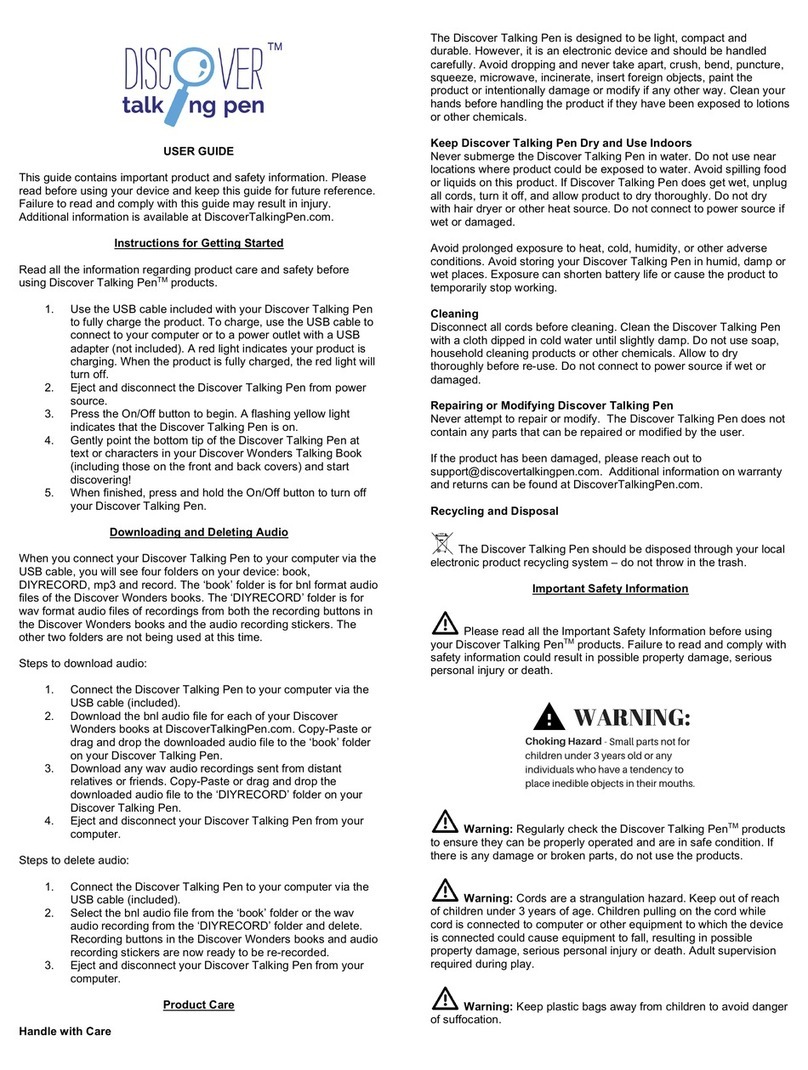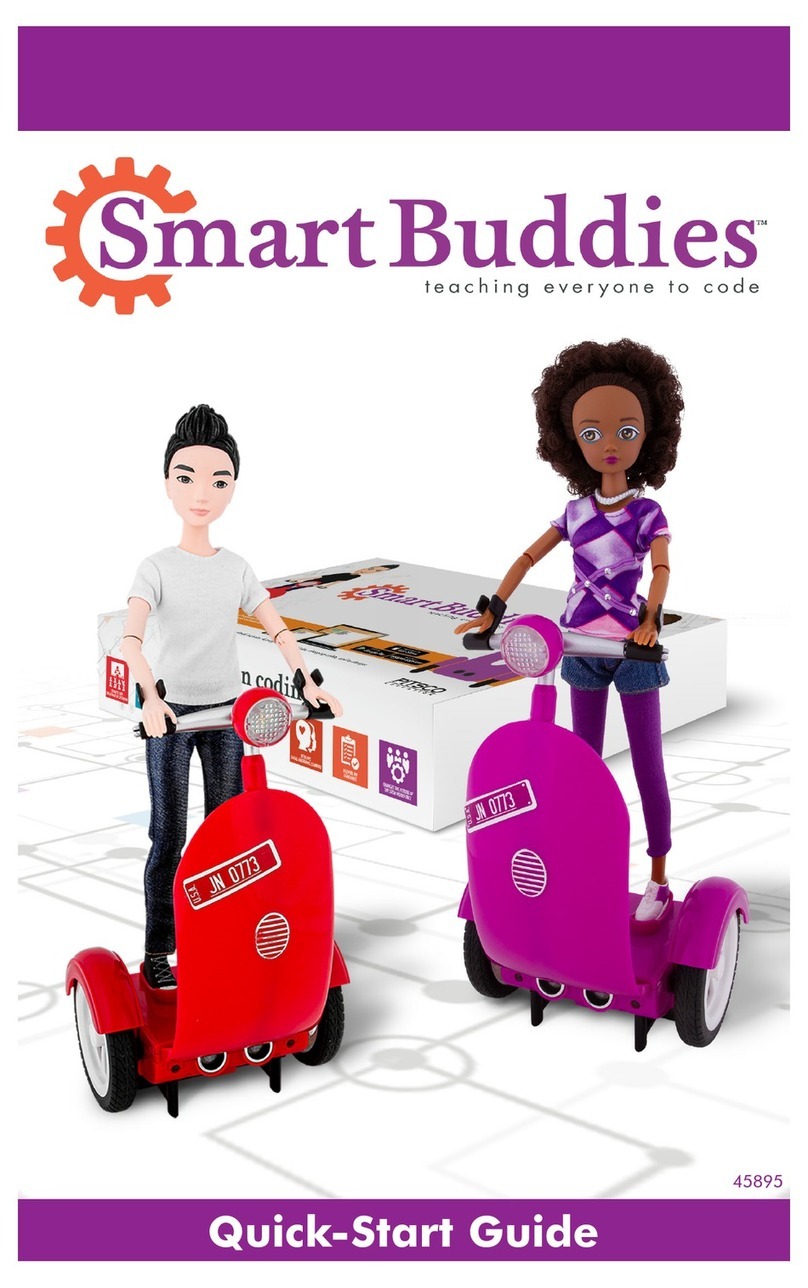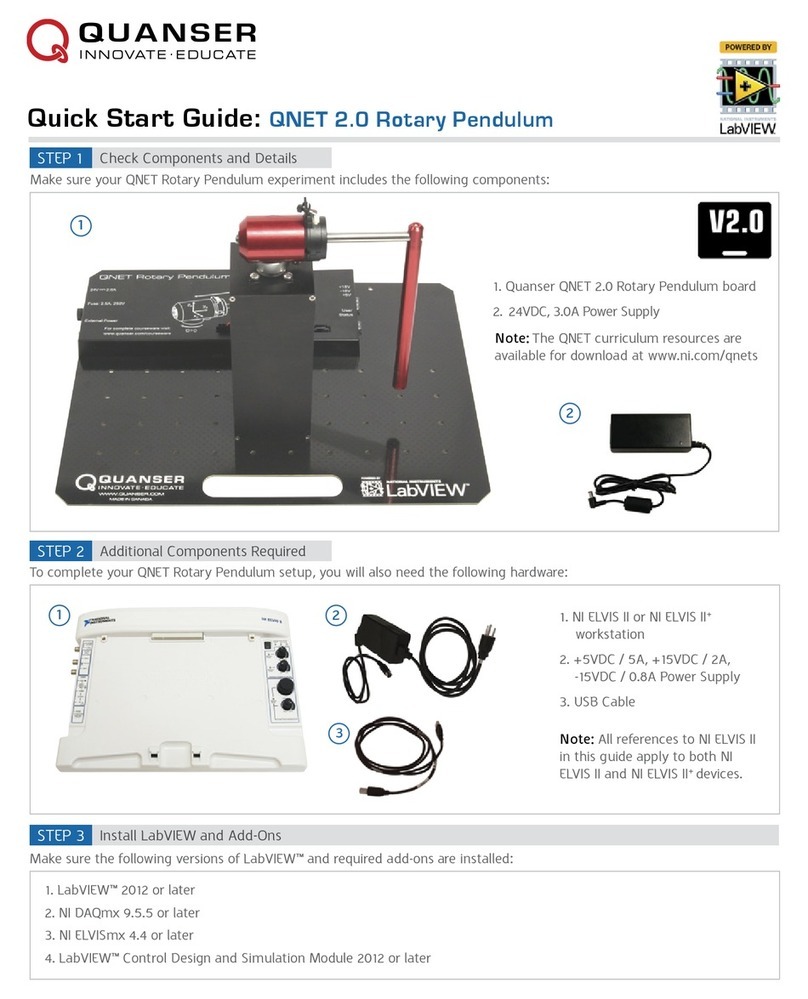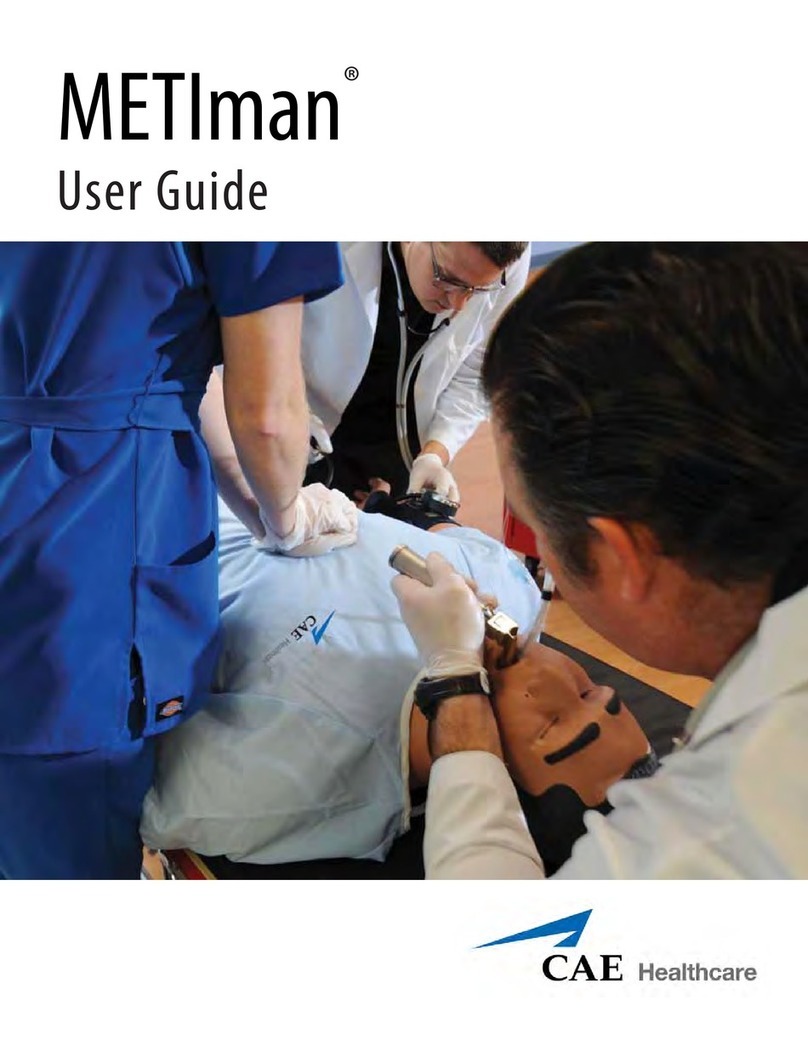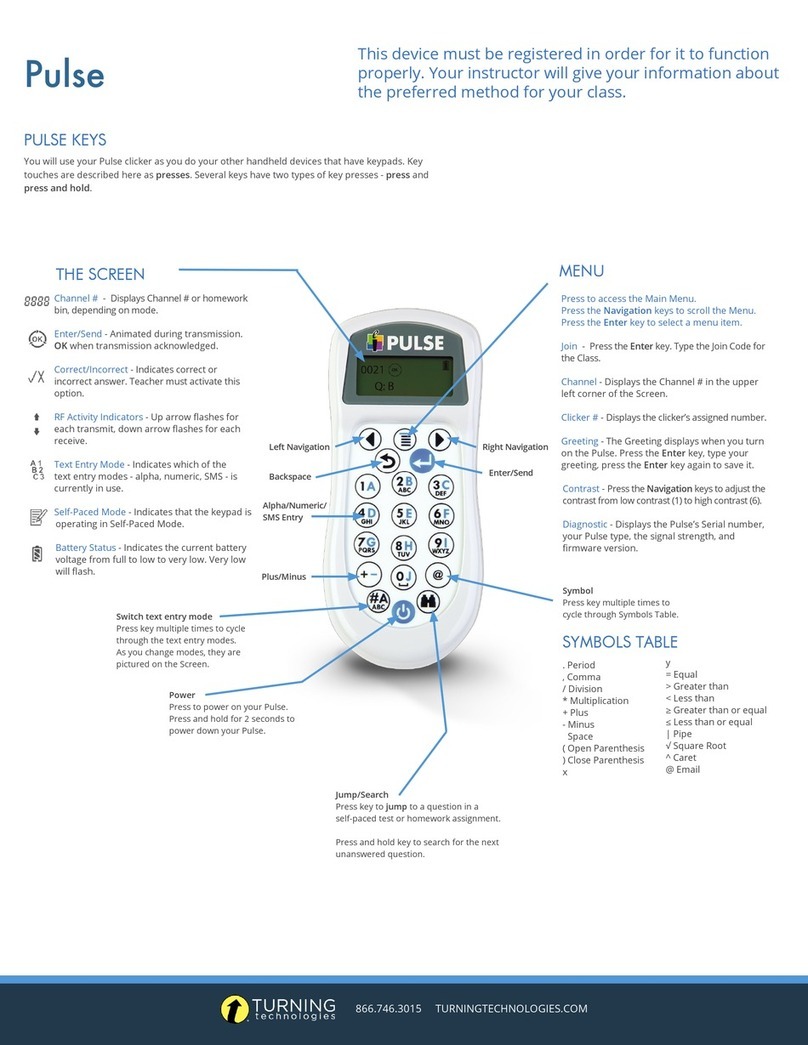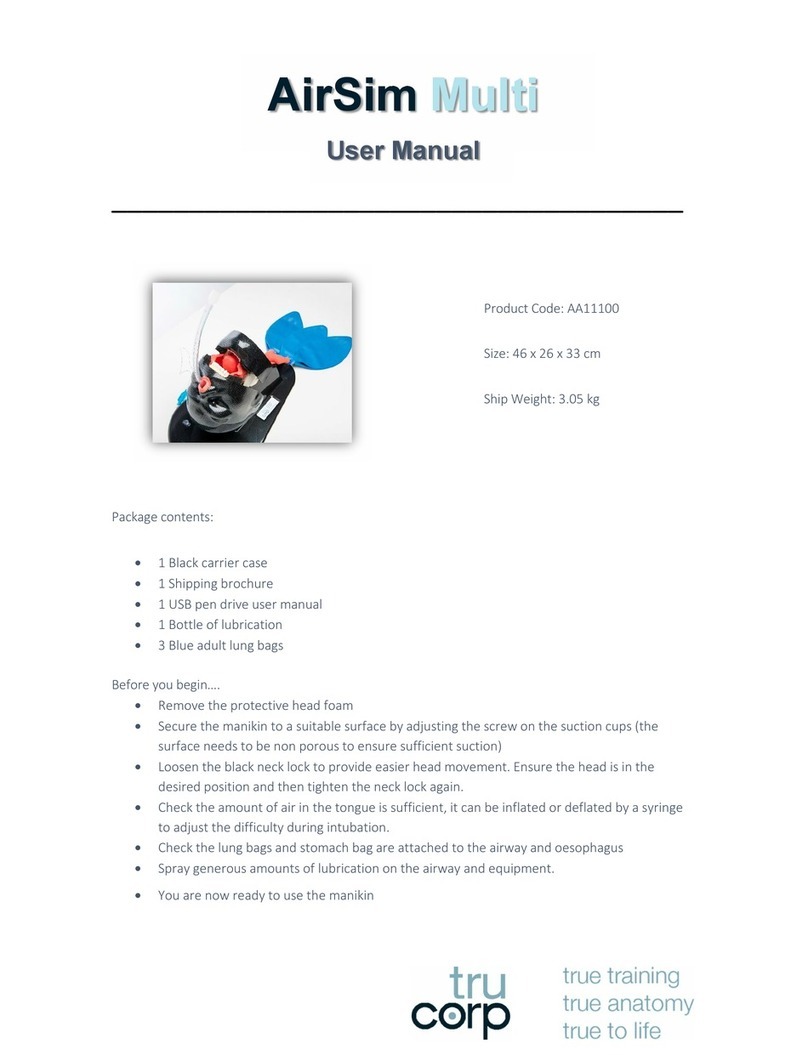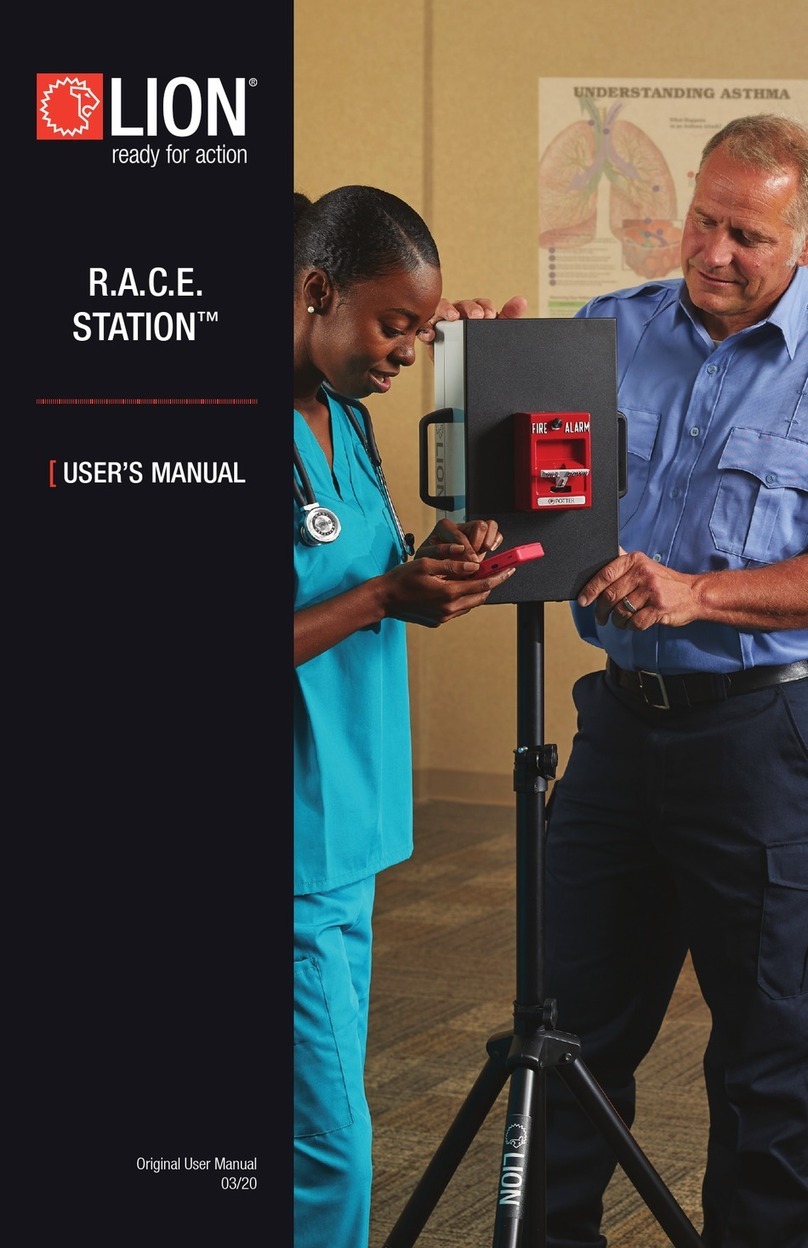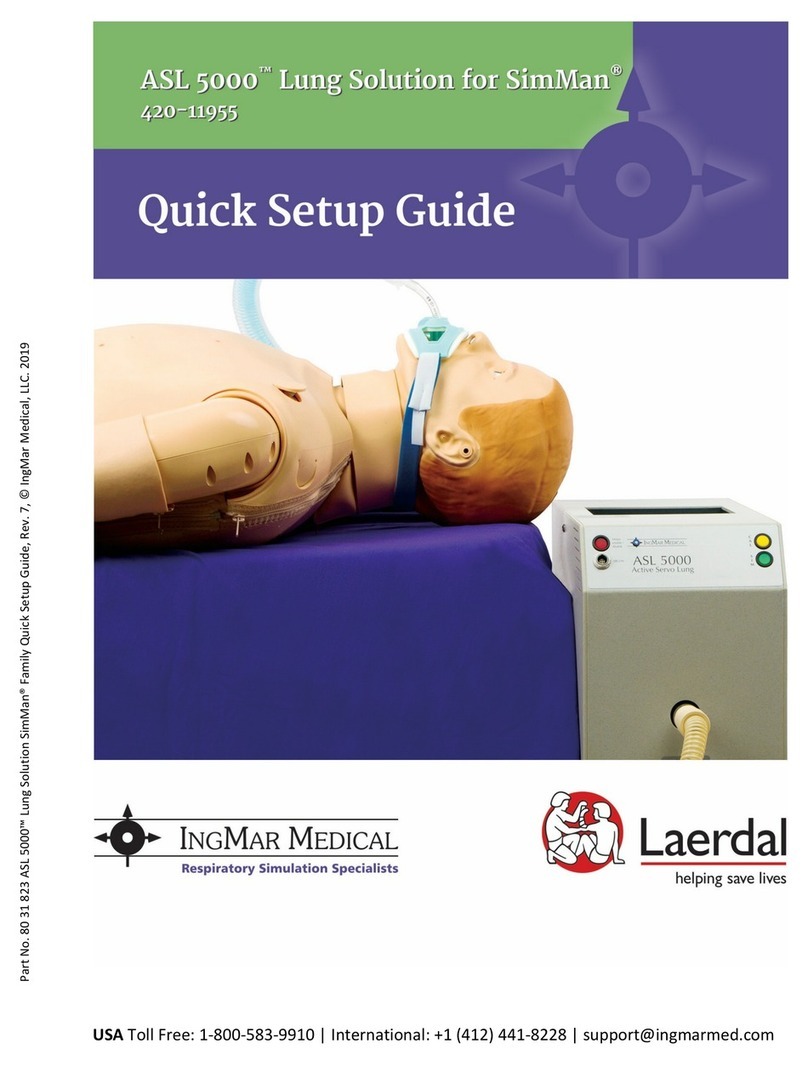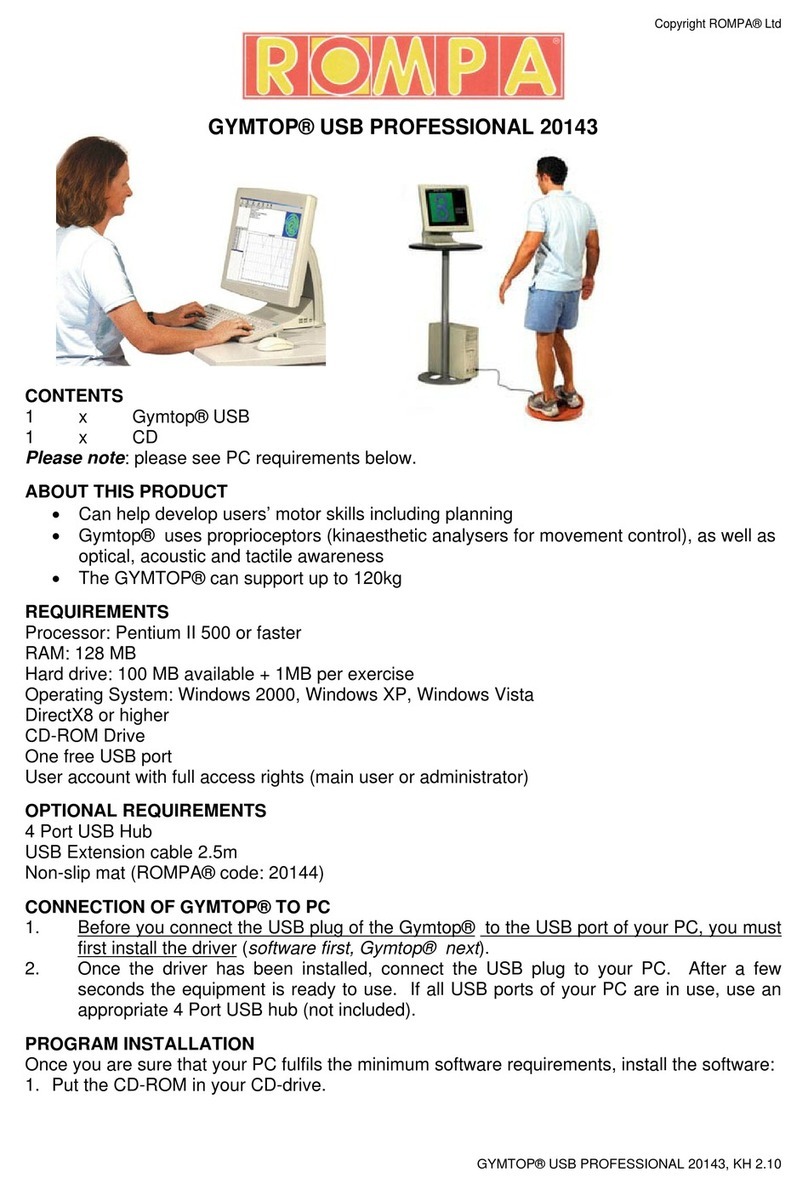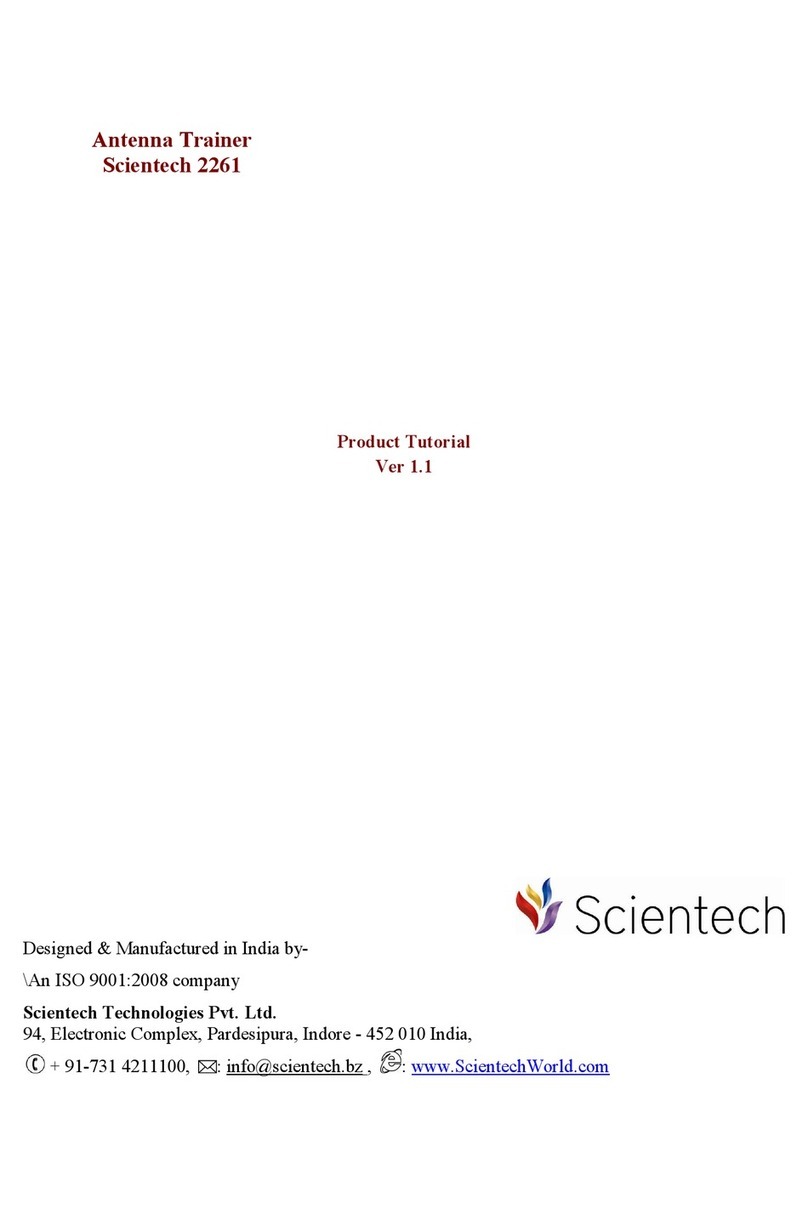
www.horizoneducational.com | support@horizoneducational.com
-10
1. You will also need the following items (not included in this kit): - AA batteries
2. The reversible fuel cell does not produce hydrogen and/or oxygen. Solution:
a. Check whether the wires are appropriately connected, and whether there
are any loose connections.
b. The fuel cell could be completely destroyed if the red wire of the battery
pack is connected to the black socket of the fuel cell.
c. Check whether the switch of the battery pack is in the “on” position.
3. The water electrolysis process slows down. Solution:
a. Add water to the oxygen side of the fuel cell and wait for about 5 minutes.
b. Replace old AA batteries with new AA batteries inside the battery pack.
4. The car stops moving while there is still hydrogen left inside the tanks. Solution:
a. Purge the gases and perform water electrolysis for 4-5 minutes. Unplug
the hydrogen gas outlet tube and oxygen gas tubes to purge the gases.
Perform water electrolysis again until the hydrogen syringe is lled, and
connect the motor to the fuel cell. If the problem persists, go to the next
step.
b. Let the water electrolysis process last about 10 minutes to consume the
residual water. To push water out of the fuel cell, purge the gases. Perform
water electrolysis once more until the hydrogen tank is lled, then
connect the motor to the fuel cell.
The aim of the DIY-kit is to provide an open-ended learning experience of hydrogen fuel
cells and all the exciting science that comes along with this technology. Below you can
nd a few projects that can be built with additional material that can be found in most
homes, schools or science labs. For more information about all the chemistry, physics
and earth science behind these technologies check out and download our free E-book
and lesson plans online; www.horizoncurriculum.com
Note; tools and material mentioned in the project are not part of DIY kit.
Note; always make sure to have an adult around while building your own project
who knows how to use the suggested tools for the projects below.
Troubleshooting
DIY Fuel Cell Kit/Classroom Pack
